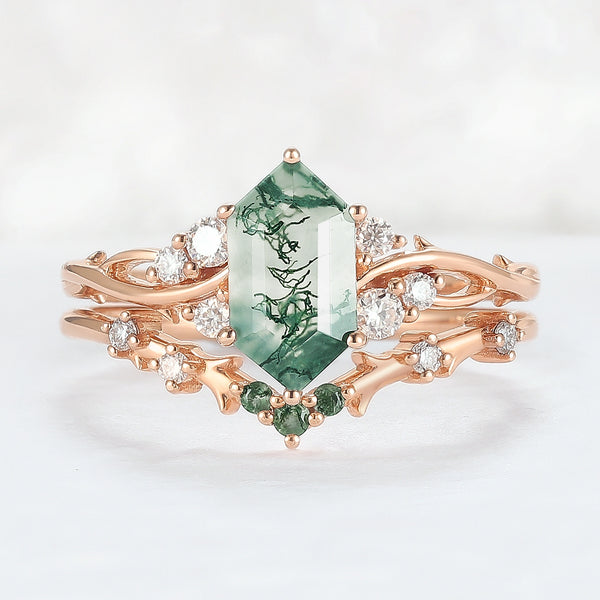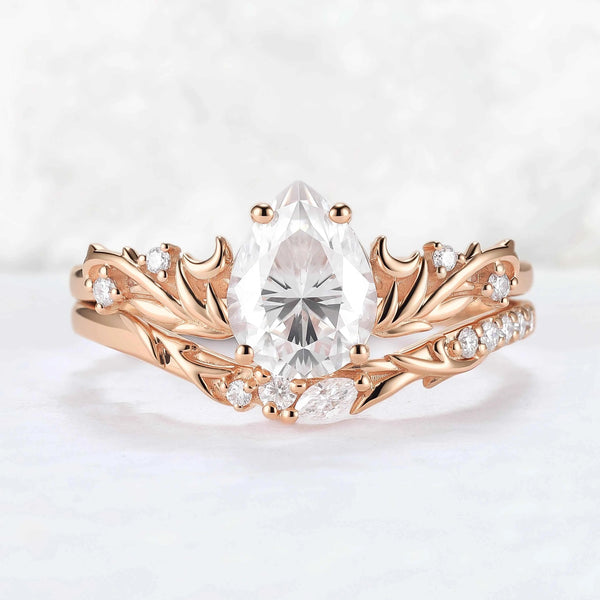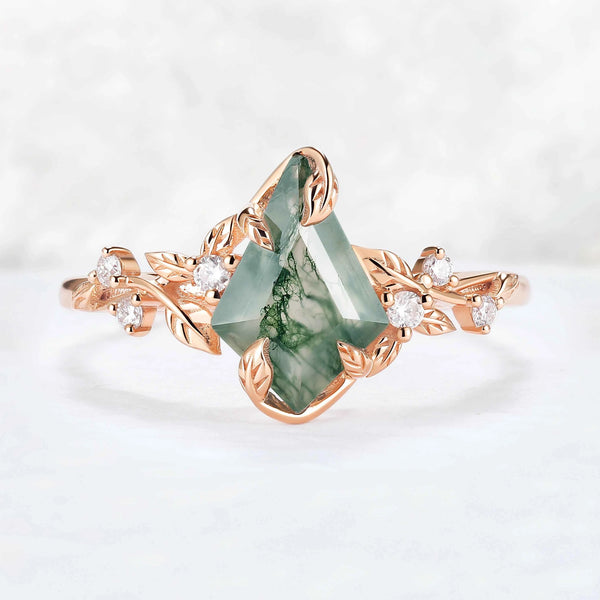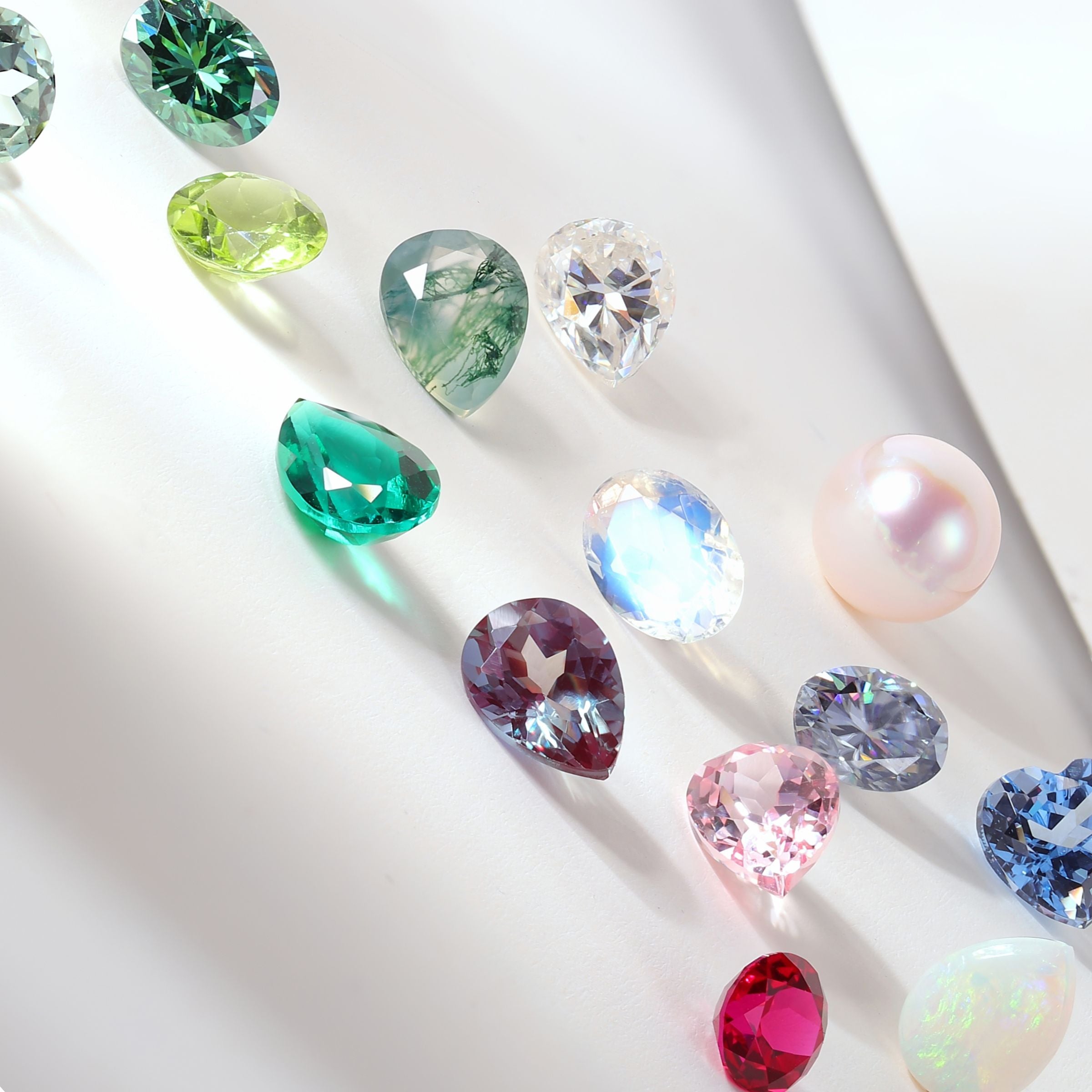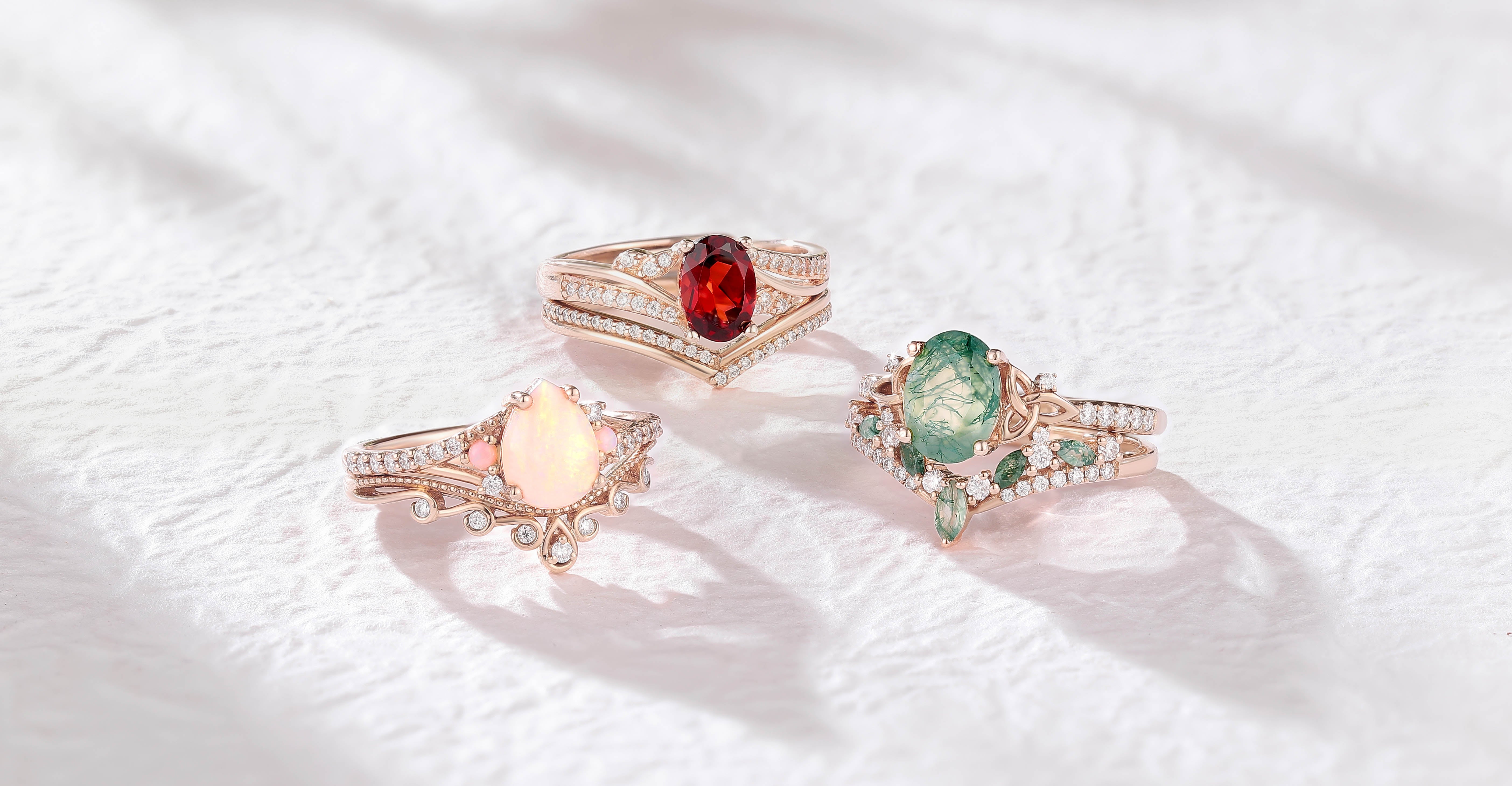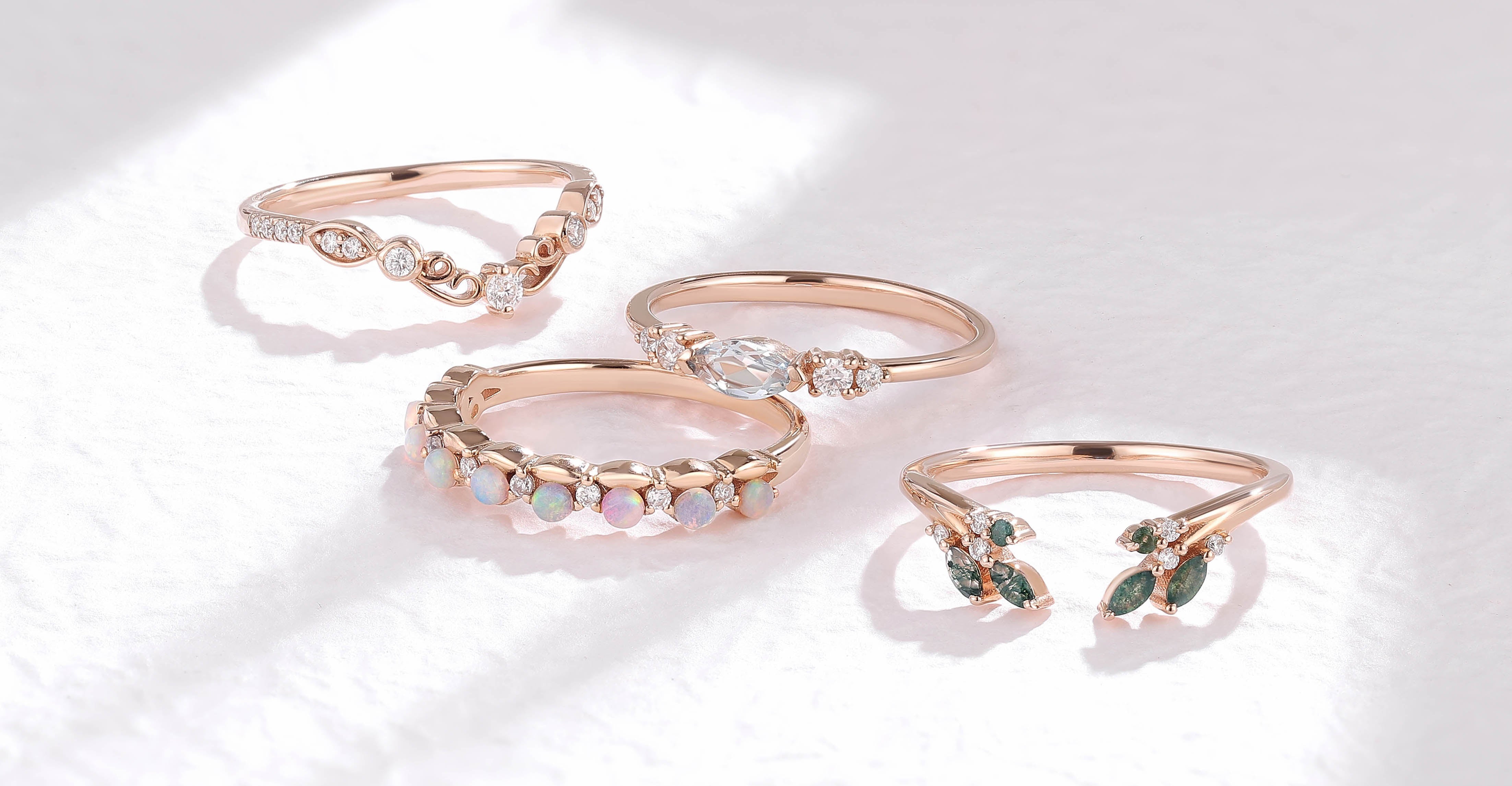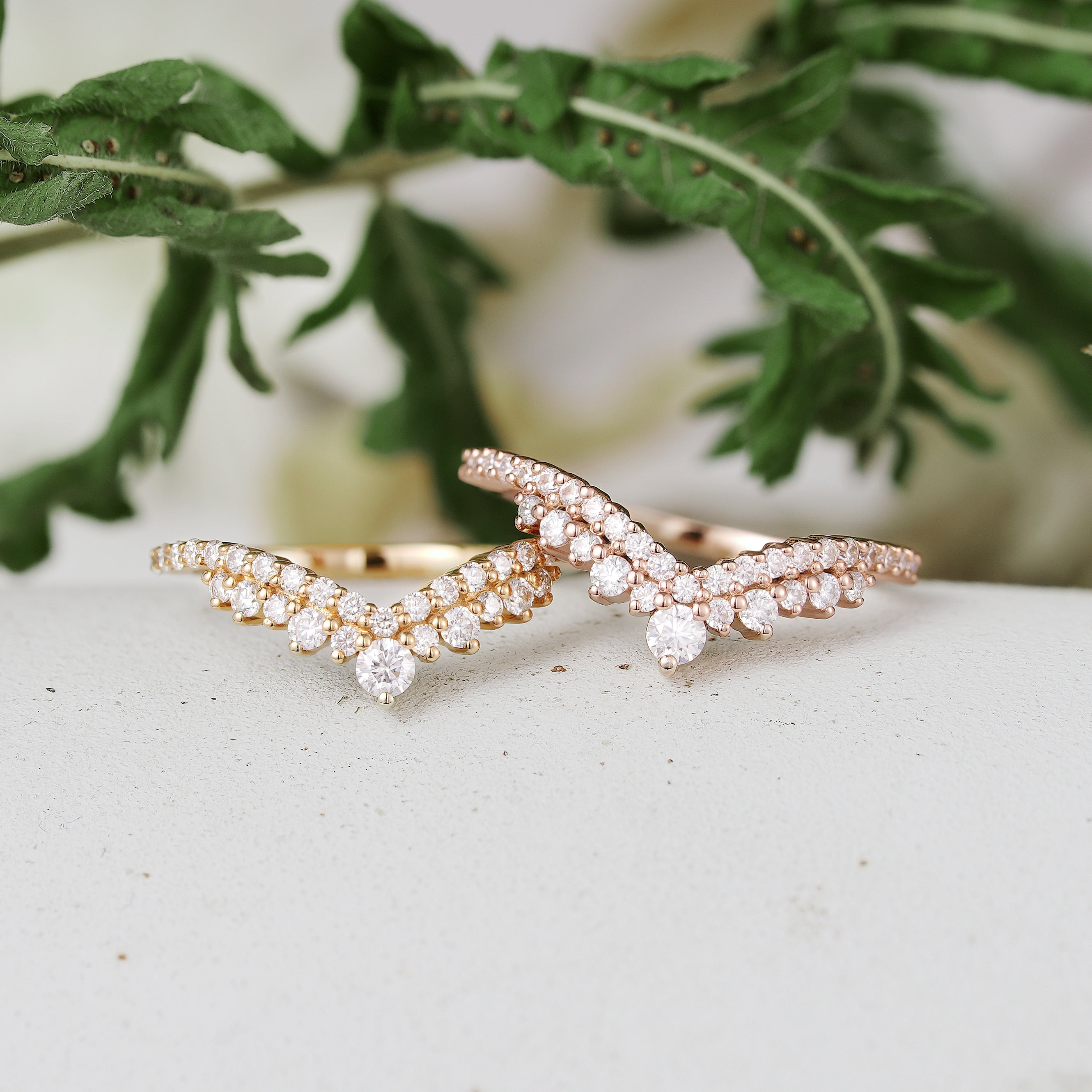Are Pearl Engagement Rings a Good Choice? What You Should Know
Pearl engagement rings have recently gained renewed attention as couples look for alternatives to traditional diamond rings. With their organic beauty, timeless symbolism, and gentle radiance, pearls offer a romantic choice that feels both classic and distinctive. But before deciding whether a pearl engagement ring is right for you, it’s worth understanding where its beauty and meaning come from.
The Origin and Symbolism of Pearl Rings
Pearl rings have a long and fascinating history in jewelry culture. Pearls, formed naturally inside mollusks, were among the earliest gemstones used for decoration. In ancient China, Greece, and Rome, pearls symbolized purity, honesty, and wisdom. They were often worn by nobles and royalty as a sign of social status and refinement.
Over time, the meaning of the pearl has expanded. In modern jewelry, a pearl engagement ring often represents balance and harmony between nature and love. Unlike diamonds or colored gemstones, pearls carry a softer beauty derived from their organic origin, making them suitable for people who appreciate natural aesthetics and understated design.These associations have helped pearl rings for women remain relevant across generations.
Choosing the Right Pearl Ring
Selecting a perfect pearl ring involves more than appearance. Several factors affect quality and value, including the type of pearl, shape, luster, and surface quality.
Pearl Types
Akoya Pearls – Known for their round shape and high luster, often used in classic pearl engagement rings.
Freshwater Pearls – Offer diverse shapes and colors, ideal for vintage pearl rings and modern jewelry styles.
South Sea Pearls – Larger and more luxurious, typically set in high-end gold and pearl rings.
Tahitian Pearls – Famous for their natural black or gray tones, creating a bolder, contemporary look.
Shape and Color
Round pearls are traditionally the most valued, but baroque or oval shapes can add character and individuality. Common pearl colors include white, cream, pink, silver, and black. The best choice depends on personal style and skin tone rather than strict rules.
Metal and Setting
Pearls pair beautifully with various metals. Gold and pearl rings in yellow or rose gold highlight warmth and contrast, while white gold or platinum settings emphasize elegance and modernity. For an added sparkle, many designs feature a ring with diamond and pearl combination, blending brilliance with softness.
Pearl Rings and Modern Jewelry Design
Today’s jewelry designers often mix traditional elements with innovative techniques. You can find pearl and diamond rings featuring asymmetrical arrangements or floral patterns that combine classic beauty with modern simplicity. Some designers also experiment with pearls paired with other gemstones, such as citrine or moissanite, creating unique contrasts of color and sparkle that bring fresh life to traditional designs.
Some designers also introduce nature-inspired motifs—such as leaves, waves, or vines—to highlight the pearl’s organic origin. A popular trend is vintage-inspired pearl rings with moissanite-set vine details, which blend antique charm with contemporary brilliance. This approach has expanded the range of pearl proposal rings, making them suitable for engagements, anniversaries, or statement pieces.
The versatility of pearls allows them to fit various fashion styles. Minimalist bands suit everyday wear, while vintage pearl rings featuring intricate metalwork, moissanite accents, or citrine details appeal to collectors and lovers of classic aesthetics.
How to Match Pearl Rings with Other Jewelry
Pearl jewelry works well with both gemstones and metals. For formal occasions, a pearl and diamond ring pairs elegantly with diamond stud earrings or a simple gold chain. If you prefer a coordinated set, a gold and pearl ring can be complemented by a matching bracelet or pendant.
When styling pearls with other pieces, balance is key. Because pearls naturally draw attention, surrounding jewelry should remain simple to maintain harmony. Many people also wear pearl rings for women as statement pieces, letting the luster of the pearl stand out on its own.
Caring for Your Pearl Ring
Pearls require specific care due to their delicate nature. Unlike hard gemstones, they are organic and porous, making them more sensitive to chemicals and temperature changes.
Avoid contact with perfume, hair spray, and household cleaners.
Wipe your pearl engagement ring gently with a soft cloth after each wear.
Store it separately from other jewelry to prevent scratches.
If worn frequently, restring pearl jewelry every few years to maintain durability.
Proper maintenance will ensure your pearls remain bright and smooth for years to come.
Frequently Asked Questions
Q1: Are pearl rings suitable for engagement?
Yes. A pearl proposal ring can be a meaningful alternative to a diamond. It reflects individuality and appreciation for natural materials.
Q2: Can pearls be worn every day?
They can, but with caution. Avoid wearing them during sports, swimming, or exposure to heat.
Q3: What makes vintage pearl rings popular?
Their craftsmanship and historic designs attract collectors. Each piece often tells a story through its detailing and setting.
Q4: What metal is best for a pearl ring?
Gold and platinum provide durability and contrast well with the pearl’s soft sheen. Gold and pearl rings in particular are favored for their classic appearance.
From classic pearl and diamond rings to contemporary minimalist styles, pearl jewelry continues to evolve while retaining its natural charm. Whether chosen as a pearl engagement ring, a vintage pearl ring, or a simple gold and pearl ring, it reflects both personal taste and an appreciation for craftsmanship.
Understanding the origins, types, and care of pearls helps you choose a ring that matches your lifestyle and aesthetic preferences—ensuring your jewelry remains beautiful and meaningful for years to come.


